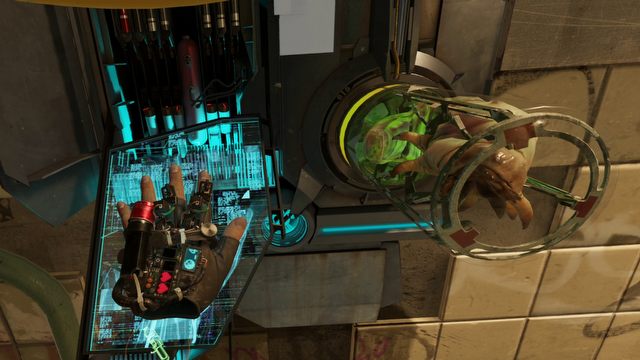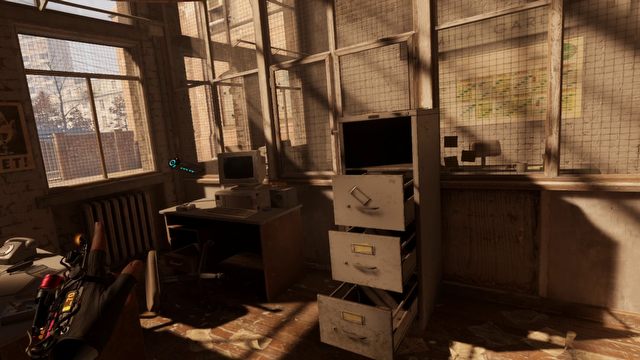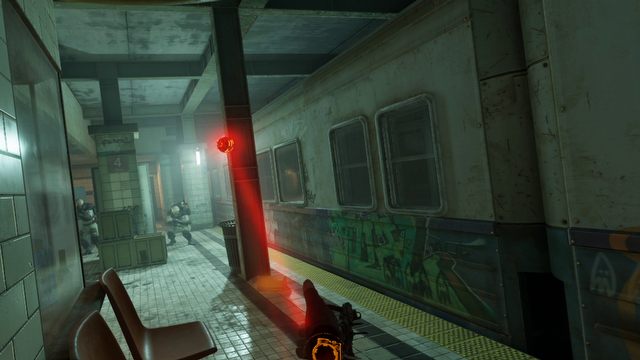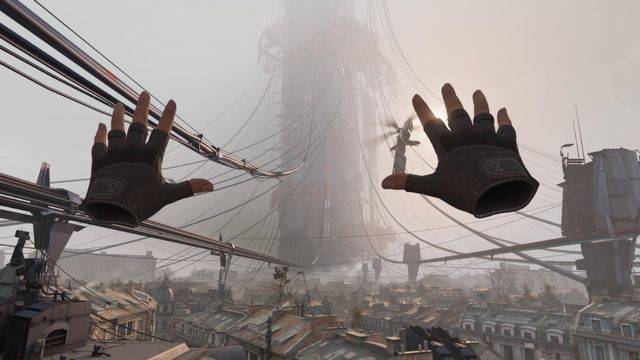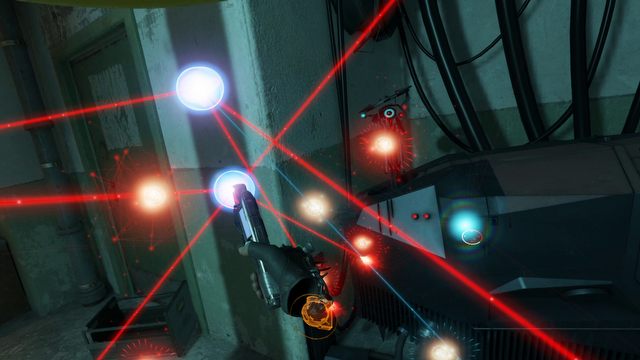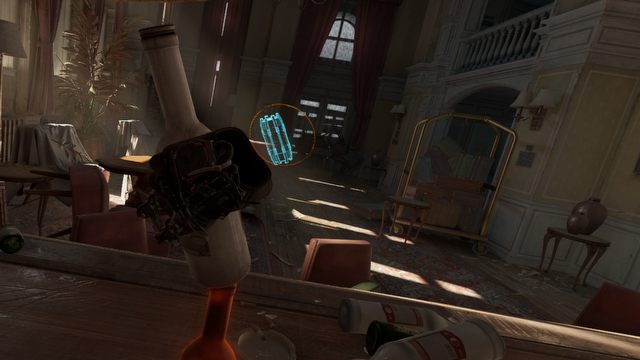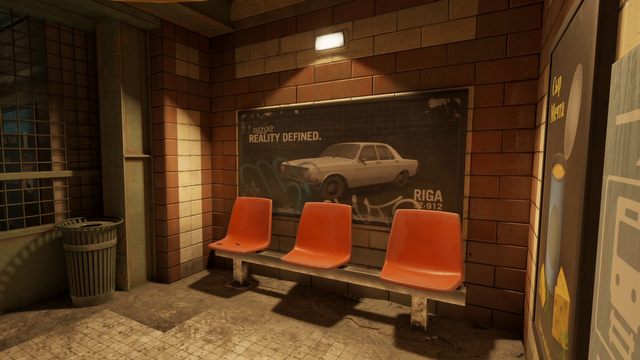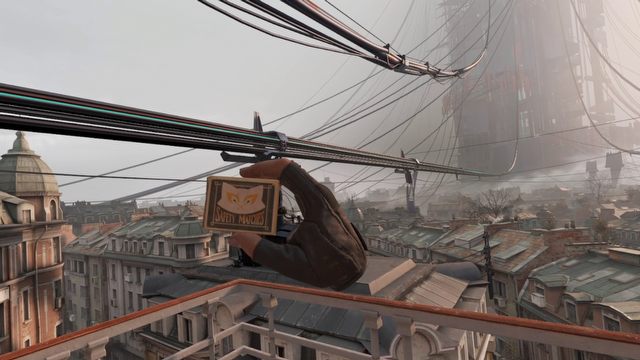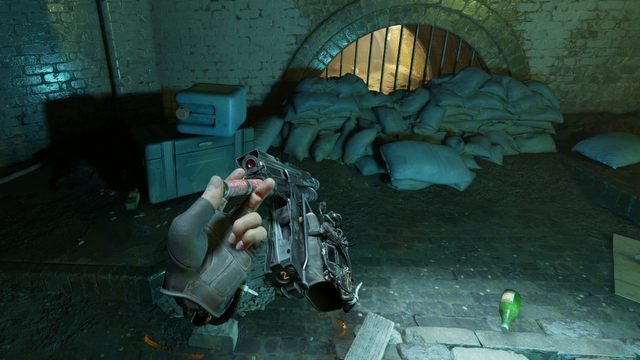Half-Life Alyx Review – the Best Game You'll Never Play
Half-Life is one of the most important series that has changed the face of video games forever. Alyx is not only one of the best VR games I have played. It's one of the best games I've ever played!
The review is based on the PC version.

- gravity gloves;
- phenomenal, very natural combat;
- ingenious puzzles;
- interesting levels;
- impressive graphics in Virtual Reality;
- the old atmosphere!
- attention to detail;
- a satisfying, long campaign;
- pretty terrifying horror scenes;
- the plot isn't just pretext;
- clever controls.
- loading screens;
- occasional errors and constraints of physics.
Recounting the details of how Valve created one of the best gaming series ever just to abandon it for more than a decade seems a futile exercise in self-torment. Why Gabe Newell's company abandoned the story (in it's most dramatic climax) after two excellent installments, and equally good episodes, remains a mystery. Ever since, the mythical third episode is the holly grail of gaming, and speculations and rumors concerning it are among the most fruitful conspiracies out there. But is there any truth to any of them? We'll probably never know. When Valve became interested in VR a few years ago, there was no shortage of ironic comments saying that the next installment of the series would appear as an exclusive title for the technology. Funnily enough, that's exactly what happened.
If someone had told me a year ago that Valve was announcing Half-Life: Alyx in this form, I would have laughed and heralded a huge backlash from players. But the very first footage offered new hope: not only the return of a great universe, but also of the company that has always created the best single-player games. Now, after spending several hours with a VR helmet on my head, I know all I needed to know. Even though I can hardly believe it, my passion for Half-Life was reinvigorated the way I had never suspected.
How, after all these years, do you go back to such a well-established universe and make players interested in a spin-off? Valve achieved that with a single phrase that appears at the beginning of the game. It makes it clear that what we're watching is in direct relation to the events of the second episode of the second installment of the series. That's when a powerful cliffhanger occurred, just to "hang in the air" for several years. Until today. The game, which takes place five years before the events of Half-Life 2, we play as Alyx Vance performing a seemingly routine reconnaissance missions. Alyx is already heavily involved in the fight against the Combine – the militaristic, multidimensional organization that controls City 17. During one of the combat operations, the Combine kidnaps Eli, the hero's father. Armed with a distinctive gun and some new toys such as the gravity gloves – an invention specifically designed with virtual reality in mind – we rush to the rescue.
Although the starting point for the plot seems a little pretentious and rather insubstantial, the adventure takes us into the heart of the mysteries of the Half-Life world and allows us to get answers to at least some of the questions that have been tormenting us for years. What's more important, however, is that the story is told in the unique, Valve style: it's thrilling and dramatic, also light and approachable. We have great, humorous exchanges between Alyx and Russell, a scientist who supports us with advice and displays complete lack of empathy. There's the murky agenda of the Combine, repressing the humanity with increasingly sophisticated technology. There are unlikely alliances, such as a friendly alien who cooks headcrabs. There's humour, drama, and feels – all that Alyx represented with her character in Half-Life 2.
Valve keeps trying to make the plot and gameplay blend seamlessly and, as always, it works out great. There are not cut-scenes at all, which makes sense, considering the game happens in VR. We see everything directly from first-person perspective, controlling her super realistic hands that really feature some incredible details. While the first Half-Life was ahead of its time by ditching cut-scenes, Alyx takes another step forward: it removes the borderline between the player and the game. Betting on the VR, though considered a superfluous decision by many, allowed the creators to deliver an absolutely mesmerizing experience that the visit to City 17 is.
How Valve Index turns out? I played Half-Life: Alyx the Valve Index VR headgear, which reportedly sold like hotcakes after the game was announced. In addition to great technical parameters, this equipment offers peculiar controllers that recognize the movement of the fingers. If you don't have such controller, don't worry – it's pretty much just a gimmick, and it doesn't make much difference.
I played on the first version of the Oculus Rift. The graphics aren't that sharp, so you've got to take Hed's word for it when it comes to the hands' details. However, the game was still very enjoyable, and visually appealing.
Martin Strzyzewski
I'm inside
To put it simply, Half-Life: Alyx is a typical representative of this series. It is a corridor shooter with interesting mechanics, physics, and a clearly outlined plot and characters. The big novelty here is the first-person perspective. No only that – the VR simply takes you into the world in a way unattainable in any other way. When I finally left the sewers after the first minutes of the game and saw the surface; the characteristic train depo, patrolled by Combine soldiers, it definitely felt like Half-Life again.
Valve takes us through well-known landscapes, but allows us to get a close look at them, touch everything. This is perhaps best visualized with the treatment station, which we have used so many times in previous games. Here, the device punctures the heroine's hands, crushing the worm, which provides healing power. And we can see every little detail.
The creators realize that in VR, everything is more interesting to the player. Half-Life 2 greeted the player with the famous playground where we could play with the physics. There is a similar playground here, but it is much less interesting – because our attention is focused on something else. On what? Literally every element of the environment. A box of matches? When you shake it next to your ear, you can hear the matches rattling inside. Pens thrown on the table? You can write or draw whatever you want on a board. Piano? You can press each key individually.
The number of small interactions like this is huge, and throughout the game I have found myself spending far too much time examining rubbish lifted from the ground, throwing bottles or checking radio stations and manually setting the receiver to the right waves. A visit to a hotel bar in one of the chapters ended, in my case, with a competition of throwing rotten apples at bottles I had set up myself. Such diversions are plentiful in the game.
But Valve's strength is that, unlike many other developers, they know when enough is enough. And thank god for that. Half-Life: Alyx is great in this respect, because at some moments, it serves small spaces where you can toy with interactions, while at others, it demands the player's attention with precisely designed gameplay mechanics.
The gravity gloves work fantastically, as they let us pick up any item without approaching it – a simple gesture is enough to have it floating towards you. Truly, this is one of the greatest inventions of the 21st century.
Don't drop the mag
"Press R to reload" is the command that appears in every shooter sooner or later. But not here. Alyx adapts all the established gameplay elements to virtual reality, and really does a great job of it. The most characteristic element here is reloading bullets, which looks different for different weapons. With a gun in your hand, you have to discard the empty magazine, reach behind you for another one, place it in the right position, and pull the lock away. In the heat of the battle, when stress is high, this often ends with dropping the ammo. It's similar when it comes to the very behavior in battle. Instead of pressing a button to take cover, you simply crouch. To shoot your opponent from around the corner, you don't have to step around it: you can just lean. You want to lie down on the ground and shoot your enemies from under your left thigh? If only VR sensors catch it, no problem!
The combat in Alyx remains extremely engaging to the very end, even though the choice of weapons isn't very impressive. For comfort, Valve adds weapon upgrades such as sights and alternative shooting modes that can be purchased at special terminals. The small number of weapons is compensated by several elements, most notably the curiously designed levels featuring with a mix of old and new opponents. The enemies themselves interact with each other – the soldiers will shoot at zombies, the zombies will be eaten by the barnacle (the things hanging from the ceiling). In many situations, we may also seek alternative methods of combat, for example by using explosive containers as traps. Usually, a chair can protect us from the onslaught of an angry headcrab. I don't want to say that after such an experience it's hard to go back to classic shooters, because I'm playing Doom Eternal, and with utmost pleasure, but the naturalness of the VR and the more realistic handling of weapons are simply wonderful in an FPS.
A physics-intensive, VR combat system seems like the heaven for exploits, but fortunately, Alyx copes very well. It's impossible to beat the enemy with just any object, and the opponents aren't helpless. And since I mentioned the most famous opponent from the Half-Life universe, i.e. the headcrabs, I must add that alongside the combat sequences where we fight zombies and soldiers, there are of course horror-like moments. I'll admit that they make a great impression in VR, almost gave me a heart attack. Especially since these little monsters can stick to your head, and you need to knock them down as soon as possible. Wandering through dark corridors with a flashlight in your hand, knowing that there might be another headcrab lurking around the corner, waiting to jump you, is an experience only for people with strong nerves. In fact, I would venture to say that after playing Alyx, a return to Ravenholm from Half-Life 2 will be rather relaxing – at lest there you've got some more space between your face and the monsters.
MOVING IN VR
The game features four movement schemes – two types point-and-click, and two types of walking models. These first options will come in handy for those who can't handle too much VR movement. I opten for regular walking. To reduce potential problems, Valve slowed the character's movement down.
Exploration, or stocktaking
Half-Life has always skilfully enriched the combat, which – like it or not – has been its central element, complemented by satisfying exploration sequences and good environmental puzzles. Alyx doesn't forget this – because even digging through the trash is satisfying. Exploration in search of the resin or ammunition is like doing a spring-cleaning in the office: we dig through bins and drawers, scatter items to see if anything is hidden under them, destroy crates, simply smashing them against the wall.
The gravity gloves make all that much easier, since you don't have to approach every single item to pick it up. When opening cabinets and drawers has become the menace of many an adventure game and walking simulator, here, it's fun and interesting. Especially since Valve usually gives us tips on where we should look for valuables.
Overall, one of the greatest surprises was how much I enjoyed the puzzles in the game. With the help of a multi-tool, the protagonist can switch electrical circuits, hack into devices, or activate switches. Each of these has a separate mini-game, which shares a common feature: each is takes full advantage of VR. For example, playing electrician requires us to track the wiring inside the wall and rearrange the cables accordingly to get the current to the right spot. Along the way, you often have to remove elements blocking access to the wall and get to the fuse boxes. Another puzzle is about the proper placement of luminous points in space, so that all elements of the system intersect. Simple puzzles reminiscent of well-known puzzle games worked well in this form. There's also plenty of environmental puzzles that have you lifting a crates to climb up a window, or pull out a pipe that blocks a mechanism.
Each of these elements has one more thing in common: purposefulness. The word pretty much defines why games form Valve were (and, apparently, are) so good. Every fragment, scene and object has some meaning and significance. You find the first grenades, and the first thing you see is a zombie locked in a room with an open vent shaft. It's there for the player to learn how to deflect grenades and throw them accurately. First encounter with an armored headcrab? The opponent stays behind the net so that its behavior can be observed, and its weak spots revealed. The mechanics are introduced in a way that doesn't leave you overwhelmed, but at the same time gets the point across, so that you can learn by playing, rather than reading. This isn't a novel approach, as many developers use exactly this concept to teach the players the mechanics of the game. Not everyone, however, seems to be so consistent and creative about it as Valve. Sometimes you can get lost, but it's usually because you're not paying attention, not because the game gets something wrong.
Designed by Valve
Twelve hours in VR goggles is quite a lot, isn't it? That's what I thought, too, and fatigue becomes a more immediate concern. I needn't have worried though – partially that's because Valve Index is pretty comfortable. More notable, however, was the attention paid to all elements of gameplay, which have been fine-tuned with remarkable precission. Sure, there were a few, purely technical, glitches along the way, such as falling through the floor of an elevator. Sure, the physics occasionally go south with stellar ragoll, and sure, the controls could be more precise. But these minor blemishes don't spoil the overall appeal of this game, which runs like a top, and generally cause no trouble. Fitting into Alyx' shoes also turns out extremely natural and quick, and we soon stop worrying about which button to press, and start figuring out funny ways of killing enemies.
Half-Life: Alyx also scores high for overall quality and refinement of virtually every single ingredient: from objects, to enemies, locations and mechanics. The graphics are impressive, but the biggest asset of the game is the technology behind it. Lightning is fantastic, both inside dark corridors, and outside, in the bright, slightly blurred light of the open air. The reflections on different surfaces, combined with the textures, often create super realistic floors and objects. And finally, the physics, the hallmark of Valve, kept in check, focused on simulating the presence of the player in the game world. Alyx is a game that feels great, and plays great. Here, I flash back to the moment I was nearly touching the floor with my face, checking out the details of City 17's pavement. Yeah, VR will forever remain unpleasant for bystanders to watch.
Talking about flashback: the surprisingly abundant loading screens really take me back... about a decade. When other games are able to maintain seamless streaming for dozens and dozens of hours, loading screens can indeed be disconcerting; fortunately, they weren't terribly long.
How long until next game?
Alyx will no doubt become the defining game for the entire VR technology. Unlike countless studios before, Valve managed to conceive and develop a coherent and complete game. And it's not even about the length of the game, which at 12 hours makes it one of the longest games for VR. The new Half-Life is simply a complete game, in which every piece of the puzzle is in the right place. I would forget that I played a VR game simply because Half-Life: Alyx is so good and engaging.
Alyx brings Valve back to their best disposition. After a few titles that followed uncertain trends, such as Artifact and Dota Underlords, the studio went back to the roots and created a fantastic single-player production. With a thrilling storyline and relatable characters, with great, inventive gameplay solutions, using a technology that offers a completely new kind of experience. I wouldn't say this is a game that makes it worth to buy Valve Index, or indeed any other VR headset. But, if Valve rolls with the punch and releases another installment in a year or two, it might just become exactly that. Which is not impossible, since Valve clearly has appetite for more.
How can I tell? Well, the ending of Half-Life: Alyx somehow – again – leaves the player with a blend of euphoria, terror, and agitation. Without giving away too much, I will just say that the game's finale simultaneously retcons the infamous epilogue of Episode Two, but also has a purely symbolic vibe. This symbolism is not particularly sublime, but it resonates strongly. The very last thing you see in the game is a certain item that Alyx almost seems to avoid up until that point – but when you see it, you will know Half-Life is back.
DISCLAIMER
We've recieved a review copy of the game from Valve, free of charge. .
Half-Life: Alyx
Half-Life Alyx Review – the Best Game You'll Never Play
Half-Life is one of the most important series that has changed the face of video games forever. Alyx is not only one of the best VR games I have played. It's one of the best games I've ever played!

